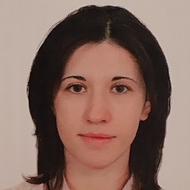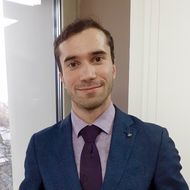- A
- A
- A
- ABC
- ABC
- ABC
- А
- А
- А
- А
- А
- HSE University
- Faculties
- Faculty of Economic Sciences
- School of Finance
- News
- Toys Prove to Be Better Investment Than Gold, Art, and Financial Securities
-
The School
-
RESEARCH ACTIVITIES
- Laboratories
- Series “Advanced studies in emerging market’s finance” at Springer Nature o Networking with international academic associations
- Networking with international academic associations
- Research seminars
- International PhD workshop
- The International Seminar «ESG Transformation»
-
RESEARCH WORKING GROUPS
- Research Working Group "Innovations in the banking sector, its financial stability and prudential regulation"
- BUSINESS EDUCATION
- Networking with business associations
- Networking with professional associations
- Center for Research on Non-Financial Reporting
-
DATABASES
119049 Moscow, Russia
11 Pokrovskiy boulevard, room S629
Phone:
+7 (495) 772-95-90*27447, *27947, *27190
+7 (495) 916-88-08 (Master’s Programme Corporate Finance)
- Email: df@hse.ru
Head of Corporate Finance Research Center, Dr., tenured professor

+7495-772-95-90 (add. 27447)

+7495-772-95-90 (add. 27947)
The HSE School of Finance is the leading Russian competence center in the field of corporate finance, business valuation, banking, stock market, risk management and insurance, accounting and audit.
HSE is the first Russian university in the global ranking "QS - World University Rankings by subject", 2022 in the subject area of Accounting and Finance. Moreover, the university is the 1-st in the rating "THE World University Rankings by subject" in the subject area of Business & Management Studies, 2022
Cherkasova V. A., Nenuzhenko I.
Journal of Economic Integration. 2022. Vol. 37. No. 1. P. 54-92.
Electronic Journal of Applied Statistical Analysis. 2022. Vol. 15. No. 1. P. 187-210.
Kolade S. A., Semenova M.
Financial Economics. FE. Высшая школа экономики, 2022. No. WP BRP 87/FE/2022.
Управление финансовыми рисками. 2022. Т. 70. № 2. С. 108-120.
In bk.: The 8th International Conference on Information Technology and Quantitative Management (ITQM 2020 & 2021): Developing Global Digital Economy after COVID-19. Vol. 199: The 8th International Conference on Information Technology and Quantitative Management (ITQM 2020 & 2021): Developing Global Digital Economy after COVID-19. Manchester: Elsevier, 2022. P. 798-805.
Korablev D., Poduhovich D.
Journal of Corporate Finance Research. 2022. Vol. 16. No. 1. P. 136-145.
Olkhovik V., Lyutova O. I., Juchnevicius E.
Научно-исследовательский финансовый институт. Финансовый журнал. 2022. Vol. 14. No. 2. P. 73-90.
Churyk N. T., Anna Vysotskaya, Kolk B. v.
Journal of Accounting Education. 2022. Vol. 58.
Абдрахманова Г. И., Васильковский С. А., Вишневский К. О. и др.
М.: Издательский дом ГУ-ВШЭ, 2022.
Абдрахманова Г. И., Васильковский С. А., Вишневский К. О. и др.
М.: Национальный исследовательский университет "Высшая школа экономики", 2022.
Гришунин С. В., Сулоева С. Б., Пищалкина И. И.
Организатор производства. 2022. Т. 30. № 1. С. 60-72.
Гришунин С. В., Сулоева С. Б., Пищалкина И. И.
Экономический анализ: теория и практика. 2022. Т. 21. № 3. С. 478-496.
S. Grishunin, E. Naumova, N. Lukshina et al.
Russian Management Journal. 2021. Vol. 19. No. 4. P. 475-493.
Journal of Corporate Finance Research. 2022. Vol. 16. No. 1. P. 99-112.
Grishunin S., Bukreeva Alesya, Alyona A.
In bk.: The 8th International Conference on Information Technology and Quantitative Management (ITQM 2020 & 2021): Developing Global Digital Economy after COVID-19. Vol. 199: The 8th International Conference on Information Technology and Quantitative Management (ITQM 2020 & 2021): Developing Global Digital Economy after COVID-19. Manchester: Elsevier, 2022. P. 190-197.
 International Conference “Future Directions in Accounting and Finance Education”, 27-28 May 2019, Moscow, Russia
International Conference “Future Directions in Accounting and Finance Education”, 27-28 May 2019, Moscow, Russia
Edited by: А. Б. Высотская, B. v. Kolk.
Vol. 58. Elsevier, 2022.
Karamysheva M., Seregina E.
Journal of International Money and Finance. 2022. Vol. 127.
In press
Journal of Economic Dynamics and Control. 2022. Vol. 137.
Karamysheva M., Skrobotov A.
Journal of Economic Dynamics and Control. 2022. Vol. 138.
Известия Санкт-Петербургского государственного экономического университета. 2022. № 4. С. 144-155.
Тихомиров Д. В., Цехомский Н. В.
Экономика и управление. 2022. Т. 28. № 1. С. 16-24.
Селезнёва З. В., Евдокимова М. С.
Финансы: теория и практика. 2022. Т. 26. № 3. С. 64-84.
Evdokimova M., Stepanova A. N.
In bk.: 38th EBES Conference - Program and Abstract Book. Istanbul: EBES, 2022. P. 39.
Assanskiy A., Shaposhnikov D., Tylkin I. et al.
Journal of Behavioral and Experimental Economics. 2022. Vol. 98.
Teplova T., Mikova E., Munir Q. et al.
Economic Change and Restructuring. 2023. Vol. 56. No. 1. P. 515-535.
Повх К. С., Кокорева М. С., Степанова А. Н.
Экономический журнал Высшей школы экономики. 2022. Т. 26. № 1. С. 9-36.
Anton Markov, Zinaida Seleznyova, Victor Lapshin.
Journal of Finance and Data Science. 2022. Vol. 8. P. 180-201.

Toys Prove to Be Better Investment Than Gold, Art, and Financial Securities

Unusual ways of investment, such as collecting toys, can generate high returns. For example, secondary market prices of retired LEGO sets grow by 11% annually, which is faster than gold, stocks, and bonds, HSE University economists say. Their paper was published in the Research in International Business and Finance journal.
According to a survey by Barclays, rich people invest about 10% of their wealth in jewellery, art, antiques, collectible wines, and cars (in addition to traditional investment in financial securities). Demand for such goods is particularly high (as is growth in their prices) in developing countries, such as China, Russia, and Middle Eastern countries. These alternative investments are well-studied, unlike more unusual goods whose purchase might seem less serious: LEGO sets, Barbie dolls, superhero minifigures, or model cars and trains.

Victoria Dobrynskaya, one of the study’s authors and Associate Professor at the Faculty of Economic Sciences
‘We are used to thinking that people buy such items as jewellery, antiques or artworks as an investment. However, there are other options, such as collectible toys. Tens of thousands of deals are made on the secondary LEGO market. Even taking into account the small prices of most sets, this is a huge market that is not well-known by traditional investors.’
There may be several reasons for the rapid growth in the price of the sets. First, they are produced in limited quantities, particularly special collections dedicated to iconic films, books, or historic events. Second, after sets are retired, the number of them available on the secondary market is not large: many owners don’t see value in them (and lose or toss parts), while others, on the contrary, value them and don’t want to sell them. Third, LEGO sets have been produced for several decades and have a lot of adult fans. It would be reasonable to assume that the more time has passed since the set was manufactured, the more it would be valued as a classic sample or a nostalgic object. However, there had been no academic studies to substantiate this assumption.
The authors of the paper looked at the prices of 2,322 LEGO sets from 1987-2015. The dataset included information on primary sales and online auction transactions (only sales of new unopened sets were selected). Secondary market prices usually start to grow two or three years after a set is retired, but there is a significant variation in returns ranging from -50% to +600% annually. Prices of small and very big sets grow faster than prices of medium-sized ones, probably because small sets often contain unique parts or figures, while big ones are produced in small quantities and are more attractive to adults. Prices of thematic sets dedicated to famous buildings, popular movies, or seasonal holidays tend to experience the highest growth on the secondary market (the most expensive ones include Millennium Falcon, Cafe on the Corner, Taj Mahal, Death Star II, and Imperial Star Destroyer). Another attractive category includes sets that were issued in limited editions or distributed at promotional events: rarity increases their value from the collectors’ perspective.
Average returns on LEGO sets are 10-11% annually (and even higher if the new set was purchased on the primary market with a discount), which is more than stocks, bonds, gold, and many collectible items, such as stamps or wines, yield.
In addition, LEGO prices are weakly dependent on the stock market (they were growing even during the financial crisis of 2008) and are relatively low in comparison to art, antiques, and cars, which makes them a reliable and accessible method of investment. However, the authors of the study say that investment in LEGO is worthwhile only in the long term (i.e., over three years) and incurs higher transaction costs (e.g., delivery and storage) than investment in financial securities.
‘Investors in LEGO generate high returns from reselling unpacked sets, particularly rare ones, which were produced in limited editions or a long time ago. Sets produced 20-30 years ago make LEGO fans nostalgic, and prices for them go through the roof. But despite the high profitability of LEGO sets on the secondary market in general, not all sets are equally successful, and one must be a real LEGO fan to sort out the market nuances and see the investment potential in a particular set,’ Victoria Dobrynskaya said.
Victoria V. Dobrynskaya
Associate Professor, School of Finance
- About
- About
- Key Figures & Facts
- Faculties & Departments
- International Partnerships
- Faculty & Staff
- HSE Buildings
- Public Enquiries
- Studies
- Admissions
- Programme Catalogue
- Undergraduate
- Graduate
- Exchange Programmes
- Summer University
- Summer Schools
- Semester in Moscow
- Business Internship
-
https://elearning.hse.ru/en/mooc/
Massive Open Online Courses
-
https://www.hse.ru/en/visual/
HSE Site for the Visually Impaired
-
http://5top100.com/
Russian Academic Excellence Project 5-100
- © HSE University 1993–2024 Contacts Copyright Privacy Policy Site Map
- Edit


